Panasonic's Rx For Health-Care VARs: Toughbook H1

Panasonic last November unveiled the Toughbook H1, the latest addition to its family of Toughbook computers, geared specifically to health-care settings. Given that health care is such a hot vertical market for solution providers in 2009, it's no surprise that demand for the devices, which began shipping in February, has been strong.
"It's a true health-care device," said Jeff Hand, vice president of sales at Howard Medical, an Ellisville, Miss.-based solution provider. "This is a health-care-specific product that takes full advantage of Intel's MCA [Mobile Clinical Assistant, see next slide] and is unlike any old business device that's been modified for health care. That right there is a sales point for us."
Channelweb.com asked Greg Davidson, senior health-care business development manager at Panasonic's Computer Solutions Company, to take us through the specifics. Panasonic has taken the H1 on a national road show for Panasonic VARs and health-care end users, which stopped in New York in late February.
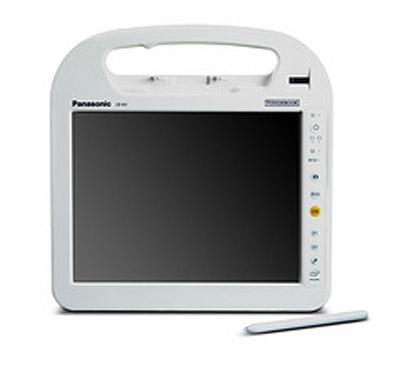
Intel's Mobile Clinical Assistant (MCA) platform was designed specifically for health care, and in February 2007, Motion Computing launched the first product specifically based on MCA, its C5. Many solution providers said Panasonic was wise to wait. Time spent watching other PC makers experiment with MCA yielded better understanding of pain points and how to solve them.
"It's a breath of fresh air mainly because Panasonic did the right thing by waiting and getting feedback on all the places Motion faulted," said Todd Stewart, director of health-care technology and sales at InfoLogix (2008 VARBusiness 500 rank No. 311), a Hatboro, Pa., solution provider. "They're the first ones who have really come out with a tablet that is health-care-centric. It supports the workflow of a health-care environment, most importantly, and is a great component piece to an overall mobility strategy."
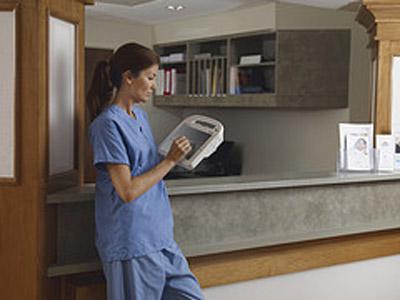
The H1 includes many of the same rugged features solution providers know from established members of Panasonic's Toughbook family, including the magnesium alloy chassis, polycarbonate case and ability to pass a drop test of 3 feet. The H1 is also fanless, completely sealed--"semi-sealed is not sealed," Davidson said--and on its surface is resistant to alcohol wipes.
"Some of our harshest customers are actually health-care users," said Davidson. "We build some of the most rugged products in the world, and I think that's surprising to find. But it's true."
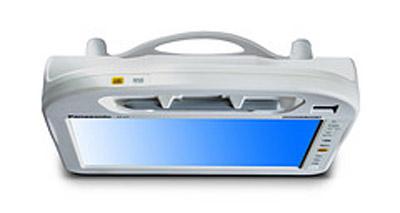
The H1 includes an Intel Atom Processor Z540, 512 KB of L2 cache, with processor speeds of 1.86GHz. Storage-wise, it features 1,024 MB of SDRAM (DDR2) and an 80-GB shock-mounted drive.
It runs Microsoft Windows Vista Business with an option to downgrade to XP Tablet, Davidson said. Other software features include a cleaning reminder tool, Panasonic dashboard, signature capture, setup, diagnostics, PC information viewer, Adobe Reader, online reference manual, keyboard button manager and recovery DVD.
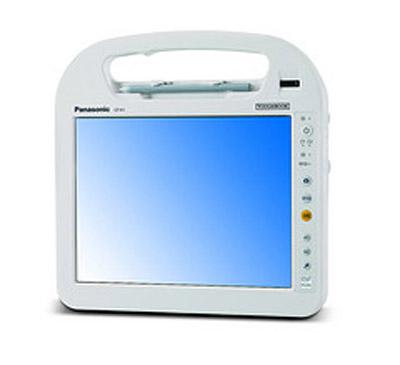
The H1 includes a 10.4-inch dual-touch 1,024 x 768 XGA daylight-viewable TFT active-matrix LCD, Davidson explained, and also antiglare, antireflective screen treatments to keep the H1 visible under bright lights used in health-care settings such as hospitals. The display level is 500 nit LCD brightness.
The keyboard itself is a touch screen: a dual-touch LCD with an integrated stylus pen holder and a 74-key on-screen keyboard. Audiowise, the H1 includes an integrated speaker and complies with Intel high-definition audio.

One of the most crucial aspects of the H1, Panasonic and solution providers agree, is its mobility play. Physically, it's lightweight (3.4 pounds) and includes a number of ergonomic tweaks, such as a carry-handle and hand strap that allow the user to carry it in one palm.
"You can take it from a cart to a patient area," Hand said. "If it's docked, it's acting as a docked CPU on the cart. But then you pluck it from the vehicle and go ultra-mobile. It goes where a regular laptop might not be able to."
For wireless technology, the H1 includes optional integrated Gobi 3G global mobile Internet (WWAN), Intel wireless Wi-Fi link 5100 suitable for 802.11 a, b, g and n standards, Bluetooth v. 2.0 + EDR (Class 1).
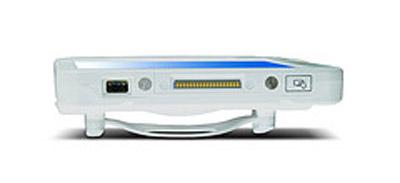
"The one thing more than anything that we'd heard for years was battery management," Davidson said. "If it only lasts two hours, it's not going to meet anybody's needs. It doesn't make sense to be sitting on a shelf half the day charging up, so not only did we use the latest Intel processor but we put a twin battery design--you at any time can take one battery out and put another one in without ever having to shut it down. It could theoretically have infinite battery life, and not just last through an entire shift but be passed from shift to shift."
The H1's power supply includes twin hot-swappable ion battery packs, enabling battery life of about 6 hours (or 3 hours on each battery). According to Panasonic, the battery charging time is 7 hours off, 10 hours on, and comes with an AC adapter, four-bay battery charger, and a spare two-bay battery charger.
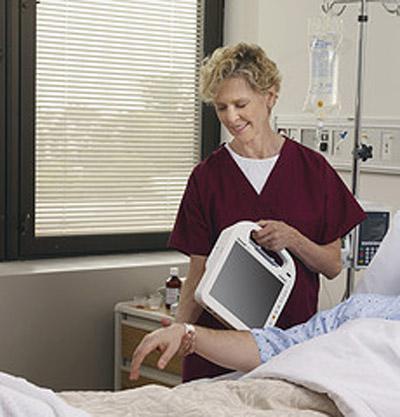
Additional features on the H1 include an integrated RFID reader (located on the bottom of the tablet vs., say, at the end of the handle as in Motion's C5; a 2.0-megapixel camera with autofocus and dual LED light; and a fingerprint reader. Optional inclusions are a 2-D bar-code reader and a GPS receiver. Those features, say solution providers, contribute to making the H1 a true mobile device--something that a hospital worker could take to a patient bedside and complete necessary tasks such as photographs and bar-code scans without too much effort or assistance from other workers.
InfoLogix's Stewart suggested it's a tablet designed with exact understanding of the hectic workflow in a health-care environment.
"Too many times we see hospitals that force a workflow onto a device instead of the other way around," Stewart said. "We've seen so many projects fail because the device got purchased--it was sexy and looked nice--but the hospital didn't take the time to understand the people and the process. Hospitals spend seven figures on things like EMR [electronic medical records], and poor device selection causes poor adoption of that overall solution. We've seen it so many times."
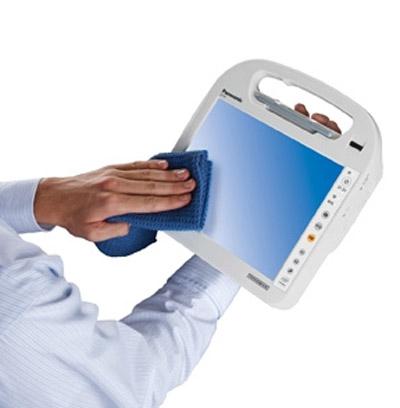
The H1's surface is alcohol-wipe-resistant and is completely sealed and fanless--tested, like Panasonic's other Toughbooks, against vibration, dust and spilled liquids. Softwarewise, the H1 also includes a cleaning reminder system that allows users to set cleaning reminders and provide a record of when it has been cleaned. The cleaning reminder system also adjusts the tint on the touch screen while it's being cleaned to show a user if he or she missed a spot while wiping it down.
"We put in a few different areas based on the feedback," said Davidson. "People liked the idea that the MCA [platform] design was meant to be very ergonomic and they wanted us to add things to make it more ergonomic, more durable. And they liked that it could be easily sanitized. So we took out the fan and eliminated a lot of the seams, plus added a reminder for people to clean it."
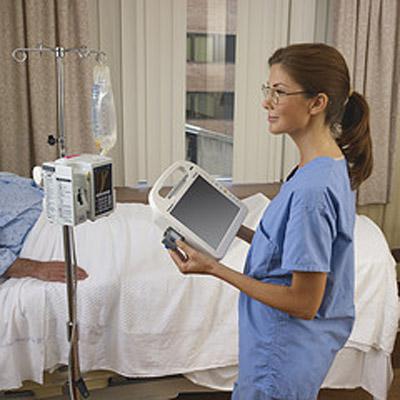
The H1 comes with a standard three-year warranty (two years longer than Motion's C5), and will be sold, as in all Panasonic Toughbooks, 100 percent through channel partners.
"Health-care customers don't use devices for only one or two years. It doesn't really make sense to offer anything less than a three-year warranty," said Davidson.
"Panasonic is being very smart about this. They're not billing it as, 'You can eliminate the need for mobile point-of-care or eliminate the need for wall-mounted workstations.' They're not telling the nurses, 'This is the device for everything,'" said InfoLogix's Stewart. "Operationally, or clinically, at a hospital, it's not all that different from building a house. There isn't just one tool that's used for building and framing. The right tool is one that drives staff productively."